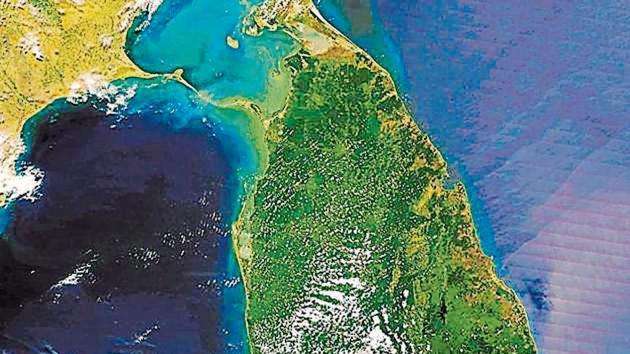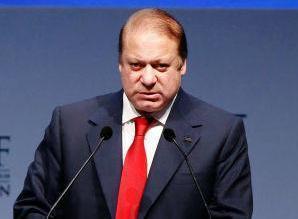July 7, 2016

Demonstrators hold signs across the street from the scene of a Wednesday night shooting in Falcon Heights, Minn., Thursday, July 7, 2016.
Two things happened on Wednesday that bear consideration next to each other.
July 7, 2016

Demonstrators hold signs across the street from the scene of a Wednesday night shooting in Falcon Heights, Minn., Thursday, July 7, 2016.
Two things happened on Wednesday that bear consideration next to each other.
The first was political. The Cincinnati suburb of Sharonville, Ohio, was playing host to presumptive Republican presidential nominee Donald Trump and one of the people he's considering for the vice presidency, Newt Gingrich. Before they walked onto the stage, though, a local sheriff who was warming up the crowd asked the audience a question.
Sheriff Richard Jones was arguing that the country was becoming more dangerous, using the examples of Chicago, Baltimore and D.C. to prove his point. On social media, the response to the question took two forms: People pointing out that walking along a street in those cities is perfectly safe 99.9 percent of the time and people pointing out that there is a racial subtext to the comment.
Butler County, where Jones is the sheriff, is 84.3 percent white (excluding Hispanic whites). Sharonville is 77 percent white. The crowd at the Trump rally — also mostly white — simply wouldn't feel comfortable walking on a sidewalk on a weekend in the nation's capital, despite crime in the city being down 2 percent and homicides being down 8 percent from last year.
A couple of hours later, fewer than 48 hours after a man named Alton Sterling was shot to death by police in Baton Rouge, a man named Philando Castile was killed by police in a suburb of St. Paul, Minn. The shooting of Sterling was captured on video as it happened. The shooting of Castile was not, but his girlfriend streamed the aftermath live on Facebook, showing anyone in the world who cared to look the image of her limp boyfriend and his blood-soaked shirt.
It was, by The Washington Post's count, the 508th police shooting so far in 2016. Five of those shootings, including Castile's, have occurred since that of Sterling. Among those for whom a race has been identified, the majority have been white. (Including those whose race we do not yet know, only a plurality have been.) But compared to the population of the United States, a disproportionate number of those killed by police this year have been black. Blacks make up 12.4 percent of the country — and more than twice as much of the population of those shot by the police.

Those shootings, though, usually happen in very different communities. We compared the shootings so far this year (excluding a few added to the data set this morning) with the demographics of the counties in which they occurred.

Just under half of white Americans live in counties that are at least 75 percent white — like Butler County and like Sharonville. Just under half of the instances in which whites were shot by the police this year happened in similarly dense areas. By contrast, only about 15 percent of police shootings involving black victims happened in such white counties.
That makes sense, given that there are more black people as a percentage of the population in places where the white population is less dense. But it also means that most police shootings of black people happen in places where white people are less likely to live. The median density of the white population in counties where police shot black people to death was 55 percent. In places where police shot white people to death, it's 72 percent.
(An aside: According to The Post's analysis, 32 percent of the time white people were killed by police this year, they demonstrated signs of mental illness. For blacks, the figure was 13 percent.)
In March 2015, MinnPost explored the segregation of the Twin Cities area, where the shooting of Castile took place. Falcon Heights, by its estimate, was about 30 to 50 percent minority according to 2010 Census Bureau estimates. St. Paul, where Castile lived, has a number of areas that are much more heavily nonwhite. (One point that's important to make in regards to the data above is that where a person was shot by police doesn't always correlate to where they lived.)
There's a sense of "somewhere else" at play here that intermingles with racial identity. Many in the crowd at the rally viewed D.C. and Baltimore as hopelessly risky, based on what they've heard and based on their impressions of the cities. They are more dangerous than Sharonville, certainly. (Sharonville's 2012 violent crime rate was 96 offenses among 100,000 people; D.C.'s was 1,177.9.) But they're not inherently dangerous places to live, as readers of The Washington Post will attest. The perception of that other place doesn't match the reality.
There is a divide in interactions with police, too. A study conducted by the Department of Justice last year of data from 2002 to 2011 found that black people were twice as likely to face use of force by law enforcement than are white people. When the encounter with the officer was a traffic stop, blacks experienced a threat of or use of force 2.5 percent of the time — compared to 0.8 percent for whites.
Racial differences between the police and the victims were also noted. When the officer and the driver were of the same race, force was threatened or used 0.8 percent of the time. When the driver and officer were of a different race, the rate was more than twice as high, occurring in 2 percent of incidents. There are studies that look at how the race of a police officer and a suspect affects their interaction. A study released earlier this year found that white police officers were a third as likely to shoot unarmed black suspects than white ones. But that same research found that 78 percent of white officers taking an implicit bias test associated black people with weapons — vs. zero percent who made the same association with whites.
The difference in use of force by race may be why white people are much less likely to see use of force as a problem. A survey conducted last August by the Associated Press in conjunction with the NORC Center for Public Affairs Research found that only 20 percent of whites saw police use of force as a very or extremely serious problem — compared to 73 percent of blacks.

The impression with which one is left is of a wide gulf between black and white Americans. Many white Americans view places that are associated with black residents as dangerous, and to view the use of police force as non-problematic. Black Americans are much more deeply concerned about instances of police violence, especially fatal shootings. Those killings of black men, meanwhile, are less likely to happen in white communities.
That gulf now overlaps with partisan politics. The Black Lives Matter movement, aimed at addressing that latter concern, has become tied up with polarized political opinion, just as crime rates in big cities are often attributed to lax Democratic leadership. (That most black Americans are themselves Democrats certainly overlaps here, as well.)
So we get weird contrasts like the one we saw Wednesday night. A mostly white crowd in a suburb of Cincinnati dismissing major cities as too dangerous to visit: Crime is a crippling problem in that other place. A black man in Minnesota shot to death by a white police officer with his last moments caught on video — the second such incident this week. But white Americans, less likely to feel its effects, still largely see deadly force used by the police as not critically important.
There are lots of divides in America, many of which overlap to some extent with politics or race or both. In case it wasn't already, Wednesday made that clear.
Courtesy: Washington Post















































































































